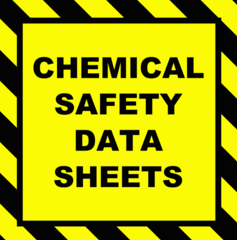 Safety data sheets have to be maintained by people that import, manufacture and distribute chemicals. These SDS should comply with the laws stipulated in OSHA's guidelines for manufacturers. Manufacturers face hefty fines in case they do not comply with these regulations and firms have to pay heavy fines if they do not follow them.
Safety data sheets have to be maintained by people that import, manufacture and distribute chemicals. These SDS should comply with the laws stipulated in OSHA's guidelines for manufacturers. Manufacturers face hefty fines in case they do not comply with these regulations and firms have to pay heavy fines if they do not follow them.
Non-compliance takes place when the upstream supplier has not yet given the GHS safety data sheets - SDS and the dealer or user has not been careful enough to confirm this. Dealers and manufacturers have first to assess their stock and check it against the safety data sheets they own to make sure that all the data sheets are up-to-date. Checking the stock often is a great practice and aids them in finding out about the missing SDS. If they buy chemicals or formulations, they should ask the supplier to give them the SDS.
In case the supplier does not give the manufacturer a safety data sheet, the manufacturer can maintain a record of communication as a precaution. He can submit the proof of communication so as to show that he is innocent and avoid a fine. An updated SDS is also critical so as to train workers in safety measures and implement these at offices in addition to protecting the environment.
The SDS is essential when using mixtures and substances which match the hazard which are defined under the GHS system. There have been some GHS measures implemented by OSHA, and it is most likely that these hazards will be redefined in the future. The manufacturers or importers of chemicals update their GHS safety data sheets as needed. As it can be noted, preparing the SDS is a complicated task when viewed from the compliance perspective and from that of offering information in a clear and concise way. This makes sure that the employees are up-to-date on security measures.
If new details are given about hazards in the future, then the manufacturers ought to change the data sheets as required and the process of approval and training the staff commence again. It is a continuous process towards the highest safety levels and safety for the environment. The safety labels should also be up-to-date and standardized together with the data sheets. This is done for compliance purposes and to make sure that there is increased safety in the supply chain.
The most recent and updated SDS are useful in trade. The regulators and buyers in that nation might insist that you have an updated SDS. In addition to the shipment, the suppliers ought to provide data sheets because if they do not, they might face issues when clearing the consignments. it might hinder the supplies in the future. Visit https://www.encyclopedia.com/environment/encyclopedias-almanacs-transcripts-and-maps/material-safety-data-sheets for more.
Article
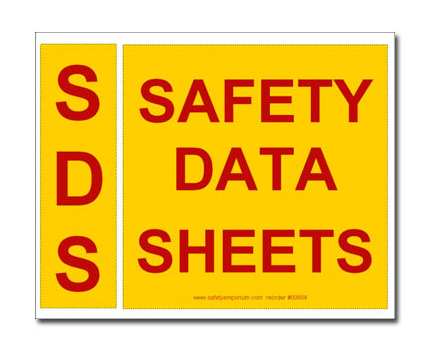 Safety data sheets are part of the Globally Harmonized System of Classification and Labelling of Chemicals. This system is very important when it comes to the handling of chemicals since it gives a uniform way of classifying and communicating chemical hazards all around the world. Many countries all over the world have adopted the use of this system to enable them to achieve a number of objectives. GHS safety data sheets has made it easier to handle chemicals across borders since all the countries have subscribed to the use of this system. This article aims to give you more information about GHS safety data sheets.
Safety data sheets are part of the Globally Harmonized System of Classification and Labelling of Chemicals. This system is very important when it comes to the handling of chemicals since it gives a uniform way of classifying and communicating chemical hazards all around the world. Many countries all over the world have adopted the use of this system to enable them to achieve a number of objectives. GHS safety data sheets has made it easier to handle chemicals across borders since all the countries have subscribed to the use of this system. This article aims to give you more information about GHS safety data sheets.
GHS safety data sheets are important in that they protect workers who are involved in the production, storage, handling and transportation of chemicals. This is because since they are aware of what they are dealing with, they can take precautions to protect themselves.
This system has contributed a lot in helping employers avoid law suits when it comes to employee safety since employers take the necessary steps to ensure that their employees are protected at all times. If you are an employer and your employees constantly deal with chemicals, it is important to ensure that they are all trained on the GHS safety data sheets so they are in a position to also take measures to protect themselves from the possible hazards of coming into contact with potentially dangerous chemicals. The disparities in chemical labelling before GHS safety data sheets would have been very dangerous for employees because of the differences in labelling.
With the continued use of GHS safety data sheets, the environment is safer. GHS safety data sheets contain information to do with the reactivity of various chemicals with the air, water and the environment. It also contains the impacts of the chemicals with the environment. An environmental conscious person will use this information so as to avoid the release of dangerous chemicals into the environment. Since this system was introduced, trade among countries has grown since there is no worry about possible mix ups due to disparities in labelling.
At times, it becomes quite difficult for a chemical processing firm to prepare GHS safety data sheets and it is therefore important to hire a professional to do the preparation.
It is important to realize that experts come in handy in the preparation of GHS safety data sheets - SDS because they are able to disclose just enough information to ensure that other parties are safe and maintain the confidentiality of whichever ingredients you use to come up with your chemicals. When preparing GHS safety data sheets, language used should be very easy to understand so as to ensure that everybody knows which chemical they are dealing with regardless of their geographical location and the disparities in language and this is where a professional comes in handy. Learn more here: https://simple.wikipedia.org/wiki/Material_safety_data_sheet.
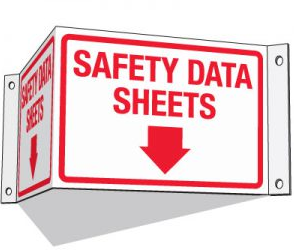 One of the most common reasons which many have always attributed to the cause for many companies managing their safety data sheets, alternatively referred to as SDS's, electronically has been the need to be in compliance to the OSHA guidelines and the need to transit to GDS. In as much as this is one of the reasons, you need to appreciate that the majority of the companies are opting for the management of their safety data sheets electronically for the fact that is makes so much business sense. Going by what reports have been given by a majority of the firms that already have the systems in place, this is one of the systems that when you will deploy in your business will quite add to your value as a business and have a positive effect on your NPV. The following are some of the benefits that most of the customers who have had these systems deployed report to be about the systems.
One of the most common reasons which many have always attributed to the cause for many companies managing their safety data sheets, alternatively referred to as SDS's, electronically has been the need to be in compliance to the OSHA guidelines and the need to transit to GDS. In as much as this is one of the reasons, you need to appreciate that the majority of the companies are opting for the management of their safety data sheets electronically for the fact that is makes so much business sense. Going by what reports have been given by a majority of the firms that already have the systems in place, this is one of the systems that when you will deploy in your business will quite add to your value as a business and have a positive effect on your NPV. The following are some of the benefits that most of the customers who have had these systems deployed report to be about the systems.
The first benefit is the fact of the savings of time. All across the board, time happens to be one of the very precious of commodities that we never seem to have enough of and as such it so even keenly applies looking at the tasks of the safety professionals who have quite a number of responsibilities all left to them. With a good electronic system that has an equally large database of the safety data sheets will indeed make the job easier and as well faster. This is for the fact that by having such systems these professionals will be spared of the responsibility of going about some of the menial tasks that take them so long when they are about their duties. Besides this is the fact that once the management systems already have known what products a company deals, they will have the updates to the safety data sheets pushed to them automatically. Additionally these will be proved to be so efficient and effective when you consider the fact that the good systems are often mobile enabled and as such you will be able to access real time information on the chemicals right from the comfort of your mobile device such as tablet or mobile phone. Visit msds.com for more.
Over and above time savings, the use of the SDS GHS systems will be beneficial to a business looking at the fact of the savings it affords on your money. This is explained in the aspect of the systems relieving your employees engaged in menial tasks and as such concentrating on the core issues of their profession and this will mean more productivity. Learn more here: https://www.huffingtonpost.com/entry/chemical-waste-dumping-video_us_576c39c0e4b0dbb1bbb9e7b9.
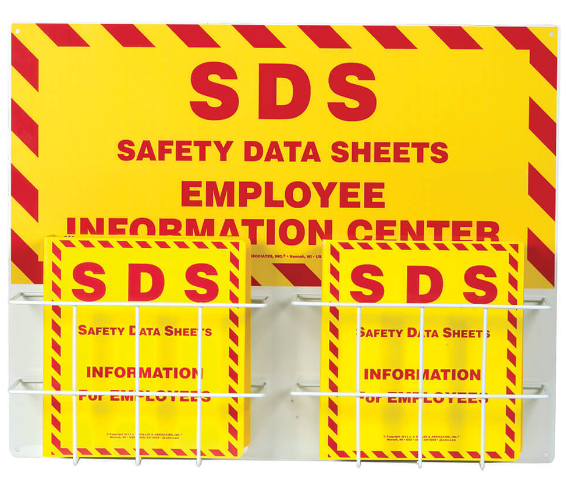 When workers are transport hazardous chemicals, handling them or processing them accidents are sometimes likely to happen and when this happens some of these people are exposed to great danger, something has to be done about it. Action must be taken because there have been reports that some workers without knowledge that chemicals are hazardous have tried to clean them up posing danger to their health.
When workers are transport hazardous chemicals, handling them or processing them accidents are sometimes likely to happen and when this happens some of these people are exposed to great danger, something has to be done about it. Action must be taken because there have been reports that some workers without knowledge that chemicals are hazardous have tried to clean them up posing danger to their health.
Some countries in an effort to protect their workers and environments from the hazards of these chemicals have come up with a system of classification to help put things in the clear. These classifications have not been developed in some countries which is still a big problem because they are not providing a safe environment for their workers to work in.
When purchasing these chemicals it is important that those selling them disclose the presence of toxins and clearly explain how hazardous they are so that those buying them can handle them accordingly. For the trade to happen all countries had to agree to follow one classification for these chemicals which meant that they hard to give up their own.
It was decided that all countries were all going to give up their classifications for the development of a unified one that was going to classify all chemicals and identify their hazard levels. This was not an easy task however, it involved the development of GHS safety data sheets that relied on the research of all the classifications made by all individual countries then eliminating all the differences while still maintaining the protection that each country intended.
Analysis of the hazardous elements of each chemical and the reactivity to air, water and other chemicals besides the impact on the environment are among the detailed works that GHS had to do. SDS had a problem trying to reveal all the hazards of these chemicals because some of this information included the confidential formulas with which these chemicals had been produced. This procedure had obstacles in the way and one of them was disclosing all the relevant information while trying to keep the secret formulas and recipes of these chemicals private. Learn more at msds.com.
Since the GHS has done its job to set defined rules it is upon companies officials to ensure that all their workers are aware of them and that they are properly trained to deal with the chemicals. It is also a requirement for these companies to provide all the SDS in printed document so that workers or people dealing with them can access them when required.
Having electronic formats of all this information is much better since it might be sent to all the workers in their remote devices so that they can look at it whenever they find it convenient. More caution will be taken if you have all your chemicals well labelled as hazardous, so make a point to have your company do that for all the chemicals that you deal with. Read more here: https://www.huffingtonpost.com/riki-ott/human-health-tragedy-in-t_b_582655.html.
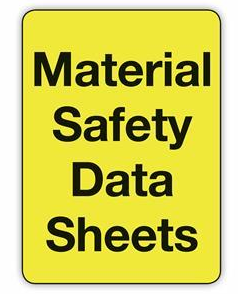 The Safety Data Sheets (SDS) is an important part of the Global Harmonized System (GHS) that are aimed at giving the important information about the chemicals for the safety of management at the workplace. The information on the SDS will usually be written by the manufacturers of the substance and this information will be about how to use, handle and also about the dangers of the chemical. The SDS will have the chemical and physical properties of the substance, the toxicity, exposure control, the flashpoint and the procedures to handle the leaks and spills. It is the requirement by the GHS to have the firms have the GHS Safety Data Sheets (SDS) in electronic form but there are other benefits that the companies reap from these and these are in the section that follows.
The Safety Data Sheets (SDS) is an important part of the Global Harmonized System (GHS) that are aimed at giving the important information about the chemicals for the safety of management at the workplace. The information on the SDS will usually be written by the manufacturers of the substance and this information will be about how to use, handle and also about the dangers of the chemical. The SDS will have the chemical and physical properties of the substance, the toxicity, exposure control, the flashpoint and the procedures to handle the leaks and spills. It is the requirement by the GHS to have the firms have the GHS Safety Data Sheets (SDS) in electronic form but there are other benefits that the companies reap from these and these are in the section that follows.
It saves time to have the GHS safety data sheets - SDS in digital form for the company. With time, things change and this may lead to changing of the information that is put down in the GHS Safety Data Sheets (SDS). Handling it is a digital form will be easy to handle because it will just require automatic updates when they change. The electronic GHS Safety Data Sheets (SDS) will reduce the need to have them printed for the various department and also to save them or store. It will hence be better to have the digital GHS Safety Data Sheets (SDS) which will help the business to focus on achieving the goals.
When you use the digital GHS Safety Data Sheets (SDS), the business will benefit in that it will have some money saved. The changes in the content of the GHS Safety Data Sheets (SDS) will require the business to train their personnel so that they will get to know the changes. The digital GHS Safety Data Sheets (SDS) will save the money that the company would have used in the training of the personnel because they tend to indicate the changes that have occurred and explain about them.
The use of the electronic GHS Safety Data Sheets (SDS) will be important when it comes to the risk management. There are many risks that will be associated with hazardous substances. It is necessary for there to be means that will be used to keep the hazards that are presented by the substances under control to avoid negative impacts. With the digital GHS Safety Data Sheets (SDS), it is possible to fast access the information that will help control the danger when it presents hence avoiding the impacts. Click here for more: https://simple.wikipedia.org/wiki/Material_safety_data_sheet.



